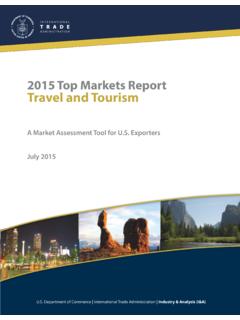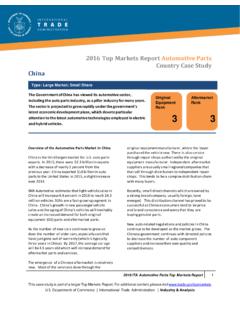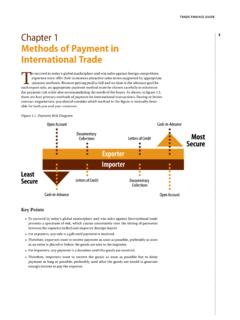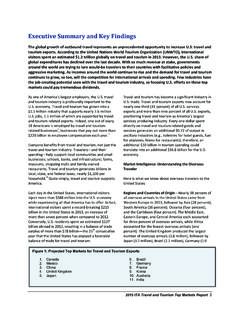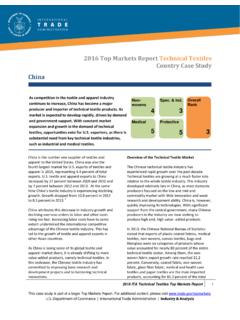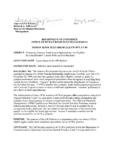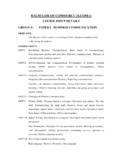Transcription of Chapter 12 25 Foreign Exchange Risk Management F
1 TRADE FINANCE GUIDE. Chapter 12 25. Foreign Exchange Risk Management F. oreign Exchange (FX) is a risk factor that is often overlooked by small and medium- sized enterprises (SMEs) that wish to enter, grow, and succeed in the global market . place. Although most SME exporters prefer to sell in dollars, creditworthy Foreign buyers today are increasingly demanding to pay in their local currencies. From the viewpoint of a exporter who chooses to sell in Foreign currencies, FX risk is the exposure to potential financial losses due to devaluation of the Foreign currency against the dollar.
2 Obviously, this exposure can be avoided by insisting on selling only in dollars. However, such chArActeristics of A. an approach may result in losing export opportunities to Foreign currency . competitors who are willing to accommodate their Foreign dominAted export sAle buyers by selling in their local currencies. This approach could also result in the non-payment by a Foreign buyer Applicability who may find it impossible to meet dollar-denomi Recommended for use (a) in competitive markets nated payment obligations due to the devaluation of the and (b) when Foreign buyers insist on trading in local currency against the dollar.
3 While coverage for their local currencies. non-payment could be covered by export credit insurance, such what-if protection is meaningless if export oppor Risk tunities are lost in the first place because of the payment Exporter exposed to the risk of currency Exchange in dollars only policy. Selling in Foreign currencies, if loss unless a proper FX risk Management technique FX risk is successfully managed or hedged, can be a viable is used. option for exporters who wish to enter and remain competitive in the global marketplace.
4 Pros Enhances export sales terms to help exporters Key Points remain competitive Reduces non-payment risk because of local Most Foreign buyers generally prefer to trade in their currency devaluation local currencies to avoid FX risk exposure. SME exporters who choose to trade in Foreign Cons currencies can minimize FX exposure by using one Cost of using some FX risk Management of the widely-used FX risk Management techniques techniques available in the United States. Burden of FX risk Management The volatile nature of the FX market poses a great risk of sudden and drastic FX rate movements, which may cause significantly damaging financial losses from otherwise profitable export sales.
5 The primary objective of FX risk Management is to minimize potential currency losses, not to make a profit from FX rate movements, which are unpredictable and frequent. FX Risk Management Options A variety of options are available for reducing short-term FX exposure. The following sec . tions list FX risk Management techniques considered suitable for new-to-export SME. companies. The FX instruments mentioned below are available in all major currencies and are offered by numerous commercial lenders. However, not all of these techniques may be available in the buyer's country or they may be too expensive to be useful.
6 Non-Hedging FX Risk Management Techniques The exporter can avoid FX exposure by using the simplest non-hedging technique: price the sale in a Foreign currency. The exporter can then demand cash in advance, and the cur . rent spot market rate will determine the dollar value of the Foreign proceeds. A spot transaction is when the exporter and the importer agree to pay using today's Exchange rate and settle within two business days. Another non-hedging technique is to net out Foreign currency receipts with Foreign currency expenditures.
7 For example, the exporter who exports in pesos to a buyer in Mexico may want to purchase supplies in pesos from a differ . ent Mexican trading partner. If the company's export and import transactions with Mexico are comparable in value, pesos are rarely converted into dollars, and FX risk is minimized. The risk is further reduced if those peso-denominated export and import transactions are conducted on a regular basis. FX Forward Hedges The most direct method of hedging FX risk is a forward contract, which enables the exporter to sell a set amount of Foreign currency at a pre-agreed Exchange rate with a delivery date from three days to one year into the future.
8 For example, suppose goods are sold to a Japanese company for 125 million yen on 30-day terms and that the forward rate for 30-day yen is 125 yen to the dollar. The exporter can eliminate FX exposure by contracting to deliver 125 million yen to his bank in 30 days in Exchange for payment of $1 million dollars. Such a forward contract will ensure that the exporter can con . vert the 125 million yen into $1 million, regardless of what may happen to the dollar-yen Exchange rate over the next 30 days. However, if the Japanese buyer fails to pay on time, the exporter will be obligated to deliver 125 million yen in 30 days.
9 Accordingly, when using forward contracts to hedge FX risk, exporters are advised to pick forward deliv . ery dates conservatively. If the Foreign currency is collected sooner, the exporter can hold on to it until the delivery date or can swap the old FX contract for a new one with a new delivery date at a minimal cost. Note that there are no fees or charges for forward contracts since the lender hopes to make a spread by buying at one price and selling to someone else at a higher price. FX Options Hedges If there is serious doubt about whether a Foreign currency sale will actually be completed and collected by any particular date, an FX option may be worth considering.
10 Under an FX option, the exporter or the option holder acquires the right, but not the obligation, to deliver an agreed amount of Foreign currency to the lender in Exchange for dollars at a specified rate on or before the expiration date of the option. As opposed to a forward con . tract, an FX option has an explicit fee, which is similar to a premium paid for an insurance policy. If the value of the Foreign currency goes down, the exporter is protected from loss. On the other hand, if the value of the Foreign currency goes up significantly, the exporter can sell the option back to the lender or simply let it expire by selling the Foreign currency on the spot market for more dollars than originally expected, but the fee would be forfeited.
